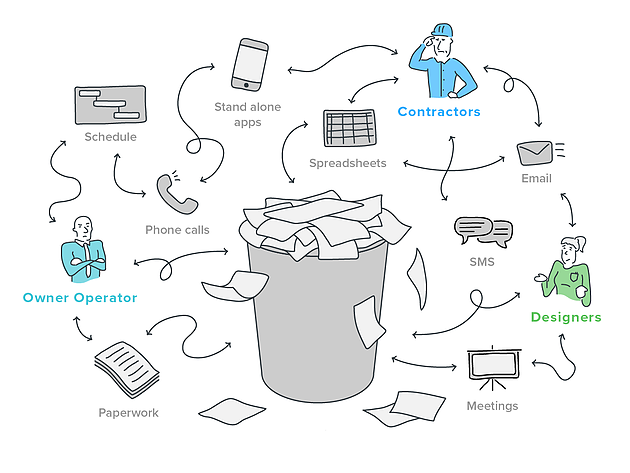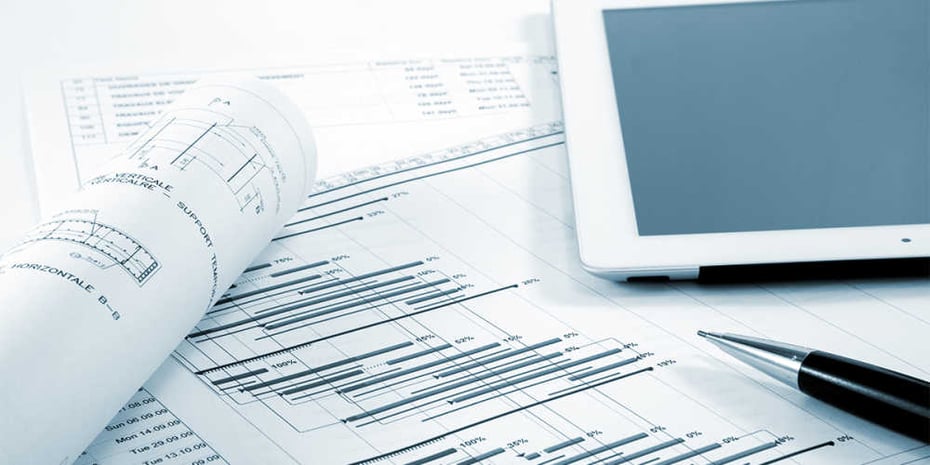From Mayhem to Control: Utilizing the Prospective of Construction Document Management
From Mayhem to Control: Utilizing the Prospective of Construction Document Management
Blog Article
Enhancing Workflow Performance: Designer's Expert Approaches for Building File Monitoring
In the world of architectural design and building and construction, the careful management of records stands as a foundation for project success. Designers employ numerous techniques to boost operations effectiveness and streamline building file monitoring processes. From experienced company techniques to the integration of collaborative systems and the implementation of safe information administration remedies, architects navigate an intricate landscape of techniques and tools. Among this complexity, a choose couple of specialist strategies have emerged as crucial in optimizing process effectiveness. These strategies not just ensure smooth job development but likewise hold the vital to unlocking improved efficiency and accuracy in the detailed world of building record monitoring.
Trick Record Company Methods
When handling building files, among the vital methods that architects employ is establishing a systematic and efficient organization system. This system normally includes categorizing papers based upon their kind, such as drawings, specs, contracts, and permits. By developing distinctive and clear groups, designers can rapidly locate certain info when needed, conserving time and minimizing mistakes in the building and construction procedure.
Within each classification, architects additionally arrange documents by using or producing subfolders numbering systems to denote revisions or versions (construction document management). This hierarchical structure ensures that the most current and appropriate information is quickly available while keeping a document of modifications made throughout the job timeline
Moreover, architects commonly make use of digital file administration systems that supply attributes like keyword search features, variation control, and access restrictions to improve company and cooperation amongst project stakeholders. These tools enhance the record retrieval procedure, advertise real-time updates, and promote smooth interaction, inevitably adding to the general success of the building job.
Collaborative Platform Integration
To optimize document management performance in building and construction tasks, designers effortlessly integrate collective platforms to enhance interaction and simplify sychronisation among project stakeholders. By leveraging joint systems such as project management software, cloud-based storage systems, and interaction devices, designers can create a centralized center for all project-related papers and communication channels. These systems permit staff member to accessibility, testimonial, and work together on files in real-time, decreasing hold-ups and the danger of errors associated with traditional record monitoring techniques.
Collaborative system integration additionally fosters transparency and liability within the job group, as all stakeholders have visibility right into the newest task updates and revisions. By centralizing interaction and file sharing, engineers can guarantee that all staff member are working from the most current information, lessening the chances of misconceptions or problems developing as a result of outdated papers.
In addition, collaborative platforms allow seamless cooperation in between architects, specialists, customers, and various other task stakeholders, promoting a more cohesive and effective job operations. By damaging down interaction barriers and assisting in information exchange, architects can drive productivity and innovation in construction projects, eventually causing effective job results.
Version Control Finest Practices
Applying effective variation control techniques is crucial for maintaining document precision and uniformity in building and construction projects. By developing a clear system for taking care of modifications, job teams can make certain that every person is functioning from the most updated paperwork, lowering the threat of mistakes and discrepancies throughout the construction phase.
One of the crucial ideal techniques for version control is to designate one-of-a-kind identifiers to each record version. This can be achieved by utilizing a numbering system or date stamp that plainly suggests the order of revisions. By plainly identifying each iteration, employee can conveniently track the development of the file and identify one of the most recent variation.

Automation Devices for Performance

Record control software, like Procore or PlanGrid, centralizes job paperwork, making it quickly obtainable to all stakeholders. These systems permit for real-time collaboration, version control, and automated backups, guarding against data loss. Additionally, Building Information Modeling (BIM) software automates the generation of construction drawings and guarantees that changes are synchronized across all related documents.
Integrating automation devices with cloud storage space options additionally boosts access and protection. By automating the record monitoring procedure, job teams can focus their effort and time on value-adding activities, inevitably improving efficiency and job results.
Secure Data Administration Solutions
Successfully handling and protecting task information is vital in the building and construction market to make sure confidentiality and stability throughout the project lifecycle. Secure information monitoring solutions play a vital function in protecting delicate info from unauthorized accessibility or breaches. Building companies can utilize encrypted cloud storage services to securely save and share project documents with accredited workers. Implementing accessibility controls, such as individual authentication and consent setups, guarantees that just licensed Clicking Here people can see or change sensitive information.
Furthermore, using electronic rights administration (DRM) devices includes an extra layer of safety by protecting against the unauthorized distribution or duplication of job records. Routine information back-ups are vital to minimize the risk of data loss due to unanticipated conditions like equipment failures or cyber-attacks. Collaborative platforms with built-in protection features enable seamless communication and data sharing amongst task staff member while maintaining data integrity.
Final Thought
To conclude, carrying out vital paper company strategies, incorporating joint systems, exercising variation control ideal techniques, making use of automation devices, and taking on safe and secure information monitoring remedies are essential approaches for enhancing workflow efficiency in construction document monitoring. These experienced approaches can simplify procedures, enhance communication, guarantee accuracy, and keep information safety and security throughout the building job lifecycle.
In the realm of architectural layout and building and construction, the careful administration of documents stands as a cornerstone for task success. These methods not only ensure smooth task development yet likewise hold the essential to opening boosted efficiency and precision in the detailed realm of construction record administration.
To enhance document monitoring efficiency in building and useful source construction jobs, architects seamlessly integrate joint platforms to boost communication and streamline sychronisation among job stakeholders. These systems enable group members to accessibility, review, and team up on papers in real-time, decreasing hold-ups and the risk of mistakes associated with typical paper management techniques.
Utilizing automation tools in building and construction file monitoring considerably improves efficiency and simplifies processes for job groups. construction document management.
Report this page